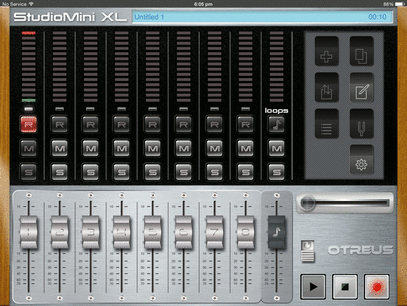Over the years, people must have told me hundreds of times “You’re not taking a proper breath” when I’m playing the trumpet.
For reasons I don’t understand, I’ve long had difficulty in this area. It’s been frustrating. I’ve breathed into breathing bags. I’ve blown back the pages of phone books. I’ve bought all kinds of plastic devices to blow into (and I’ve blown into them, too). Only a couple of weeks back, I was given a plastic tube with a 25 mm or so diameter to help me get the sensation of what an in-breath should feel like.
Somehow, though, I’ve never got it. I’ve ended up either:
And then, last week, in about five minutes, quite simply, my Alexander Technique teacher changed all that. These (slightly paraphrased) are the instructions he gave me:
When I followed these steps, I was amazed to discover that I could very easily and quietly take in enough air to play, say, a long note through 8 bars of the Walter White long tone study CD — all without any of the fuss and sense of strain I have usually associated with “taking a big breath” to play the trumpet. The physical sensation of breathing in this way was very different from what I would normally associate with "taking a big breath". Indeed, I found it hard to believe I had much air inside me at all — but the proof was in the playing.
I’m not saying this will work for every trumpet player struggling with the “how do I breathe?” conundrum, but it has certainly worked for me. I’m truly amazed it has taken me so long to discover just how easy an in-breath can be when I’ve got a trumpet in my hand!
For reasons I don’t understand, I’ve long had difficulty in this area. It’s been frustrating. I’ve breathed into breathing bags. I’ve blown back the pages of phone books. I’ve bought all kinds of plastic devices to blow into (and I’ve blown into them, too). Only a couple of weeks back, I was given a plastic tube with a 25 mm or so diameter to help me get the sensation of what an in-breath should feel like.
Somehow, though, I’ve never got it. I’ve ended up either:
- Not taking much of an in-breath at all, or
- “Trying really hard” to take a good in-breath, sucking in air fairly audibly, and feeling quite tense and discombobulated by the time I need to start making a note
And then, last week, in about five minutes, quite simply, my Alexander Technique teacher changed all that. These (slightly paraphrased) are the instructions he gave me:
- Stand quietly, and breathe in and out in a quite ordinary fashion through the nose (as if waiting for a bus, say, or reading a book).
- After establishing the above pattern, drop your mouth open on the in-breath. Continue to breath out through the nose. The result will be that air enters your lungs very quietly.
- In small increments, increase the volume of air moving on each breath while maintaining the ease established above. Air should still be entering your lungs very quietly. If it helps, think “I am being breathed”, rather than “I am breathing”.
- Maintaining the feel and rhythm established above, place the trumpet over the lips on the out breath, form an embouchure, and play an easy note, then breathe in again with the same ease you experienced in all the previous steps.
- Add a metronome beat (say, 60 beats per minute), and time the in-breath to start on on, say, beat four, then play a note starting on beat five. It’s important not to use a metronome until this step. Introducing the metronome beat any earlier is likely to stimulate you to breathe over-forcefully if this has been your past habit.
When I followed these steps, I was amazed to discover that I could very easily and quietly take in enough air to play, say, a long note through 8 bars of the Walter White long tone study CD — all without any of the fuss and sense of strain I have usually associated with “taking a big breath” to play the trumpet. The physical sensation of breathing in this way was very different from what I would normally associate with "taking a big breath". Indeed, I found it hard to believe I had much air inside me at all — but the proof was in the playing.
I’m not saying this will work for every trumpet player struggling with the “how do I breathe?” conundrum, but it has certainly worked for me. I’m truly amazed it has taken me so long to discover just how easy an in-breath can be when I’ve got a trumpet in my hand!

 RSS Feed
RSS Feed